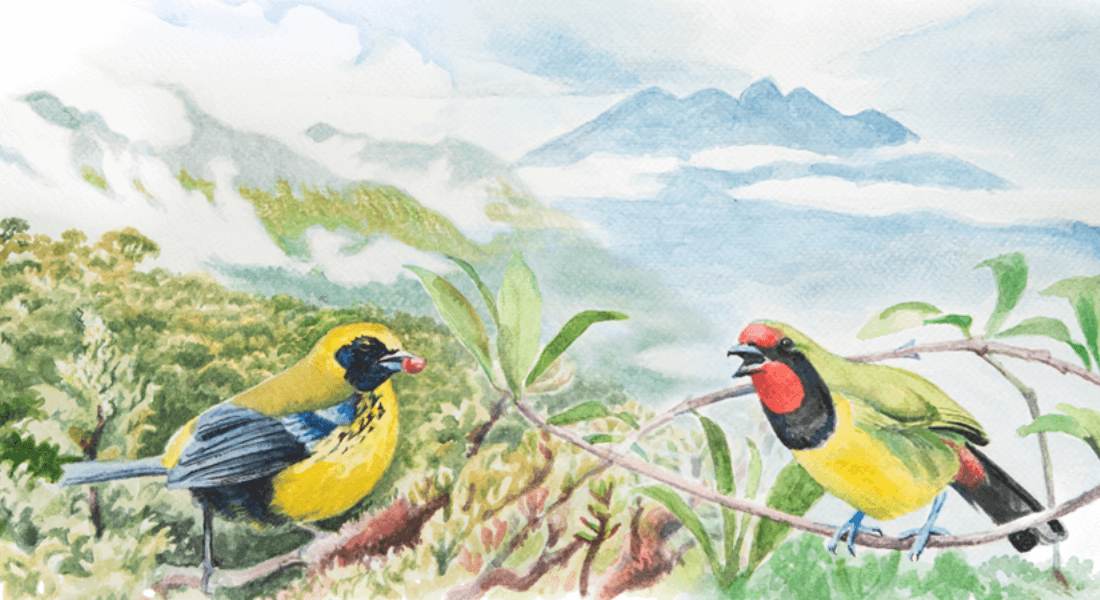New insight into biodiversity hotspots
Using datasets for thousands of bird species, a new study from the Villum Center for Global Mountain Biodiversity shows how the shape of species’ geographic distributions is an important piece of information in answering what determines biodiversity richness on Earth.

Tropical mountain regions, like the Andes in South America, are famous for their high biodiversity richness, including an abundant variety of bird species. However, the reason why certain areas become so-called biodiversity hotspots is considered one of biology’s enigmas.
For a long time, scientists have established that global biodiversity hotspots are associated with a tight packing of species with small range sizes. But the range size of species is only one of many factors, and the new research shows there’s more to the story.
The new study is published in Science Advances led by Postdoc Jesper Sonne, and senior-authored by Professor Carsten Rahbek from the Villum Center for Global Mountain Biodiversity, Globe Institute, University of Copenhagen.
Shape matters
By analyzing large datasets on more than 8,000 bird species, the research team can now reveal that the shapes of their geographic ranges - how stretched out or patchy their habitats are - play a big role in creating the foundation for the most extreme hotspots of species richness.
In mountainous regions with few seasonal changes and varied terrain stretching for thousands of kilometres, bird habitats tend to be more irregular and elongated. These peculiar shapes help increase the number of species found in a given region.
- By addressing a long-standing and general enigma regarding what determines the pattern of diversity of life on Earth, our study changes the perspective on the build-up of global diversity hotspots, says Postdoc and first author Jesper Sonne and continues:
- Notably, our results change the established view that global hotspots of species richness in mountain regions derive solely from the concentration of small-ranged species.
Adding a new piece to the puzzle
In places like the tropical Andes, the habitat shapes influence species richness even more than the overall size of the birds’ ranges. This suggests that the way habitats are arranged - based on factors like climate and landscape topography - can be just as important as how much space a species occupies.
The insights provided by the new study is another important piece of the puzzle that helps researchers better understand biodiversity dynamics, Professor and senior author Carsten Rahbek concludes:
- Our study contributes a new piece in understanding global biodiversity hotspots and sheds new light on Humboldt’s classic Enigma on why certain mountains are so extraordinarily rich in species.
Read more
Sonne J, Borregaard M K, Colwell R K, Rahbek C (2025). Geographic range shapes influence species richness in global hotspots. Science Advances 11 (2025). DOI: https://www.science.org/doi/10.1126/sciadv.aea0138.
Contact
Jesper Sonne
Postdoc
Email: jesper.sonne@sund.ku.dk
View Research Profile
Carsten Rahbek
Professor and Center Director
Email: crahbek@sund.ku.dk
View Research Profile
